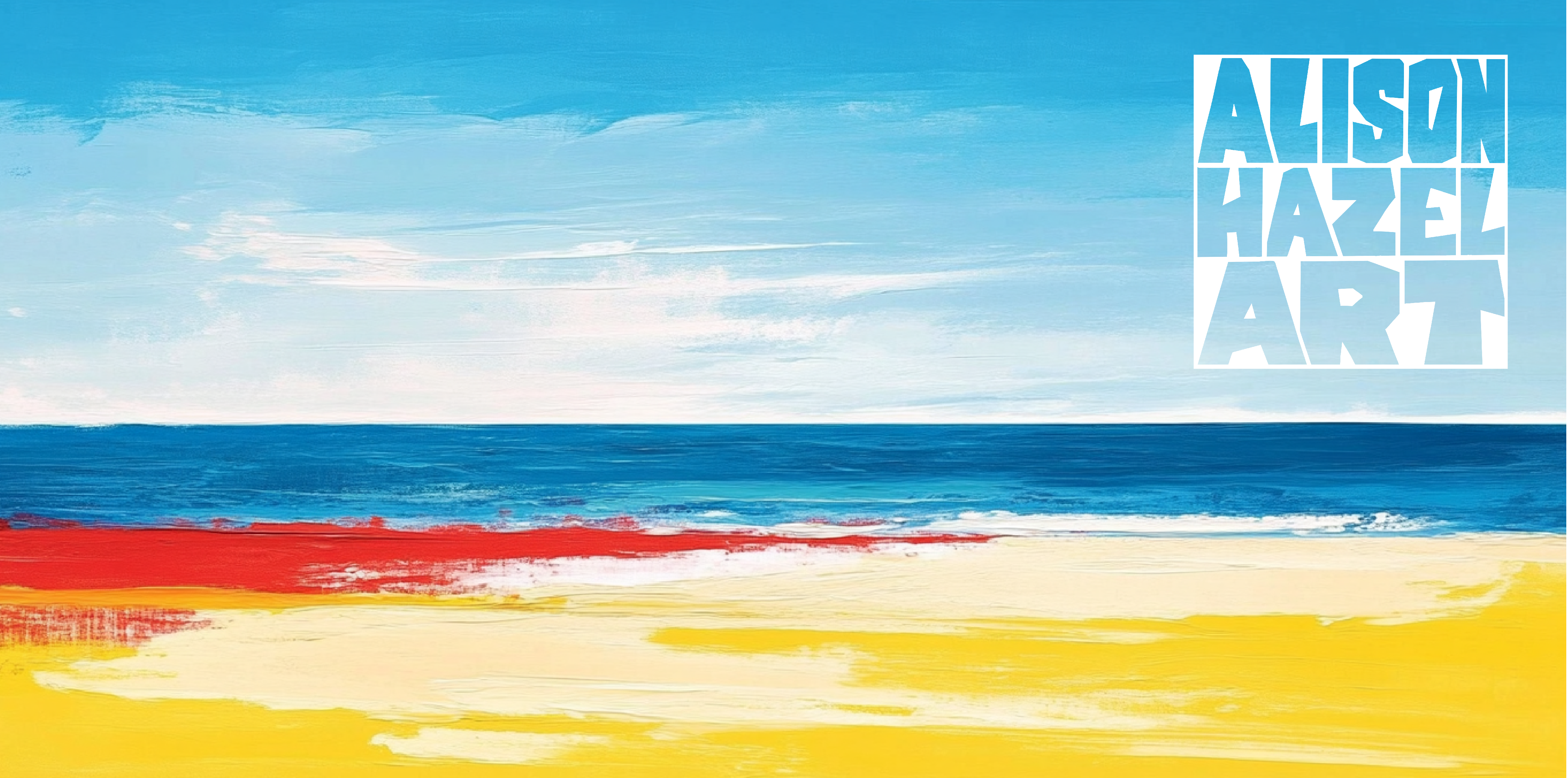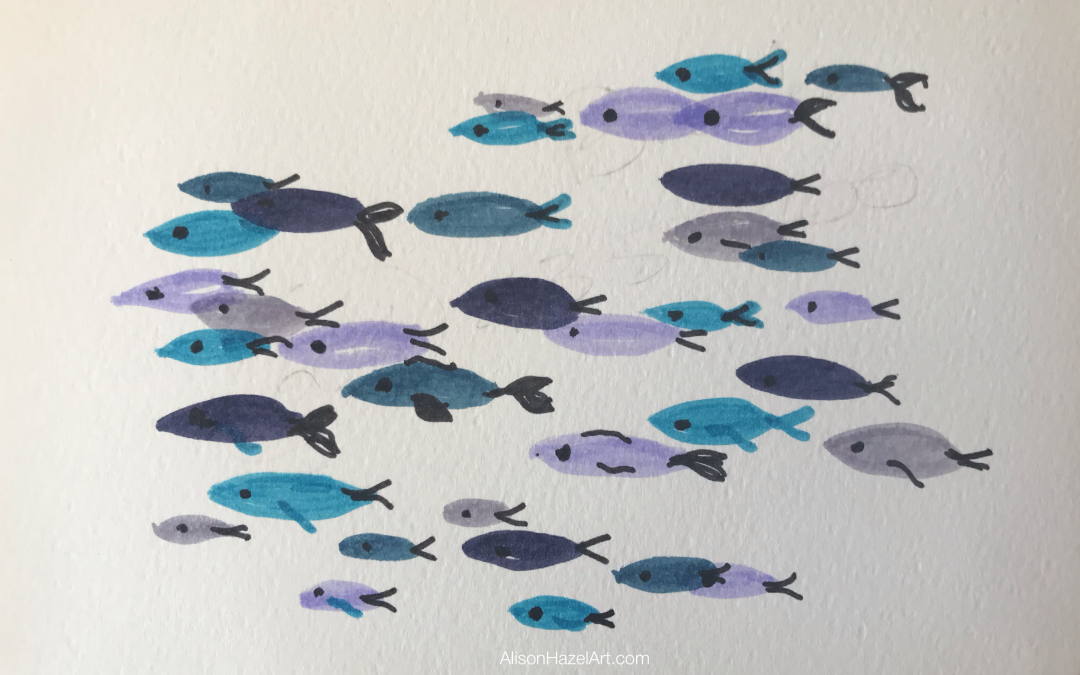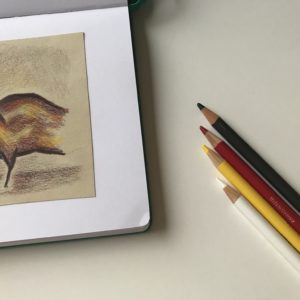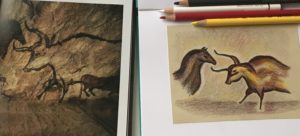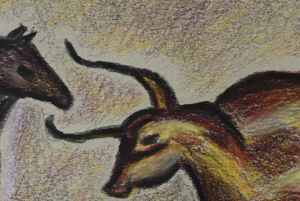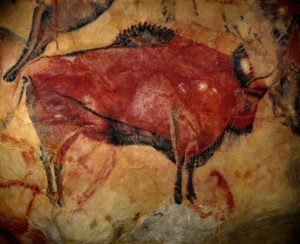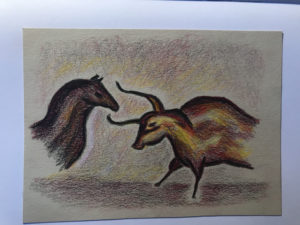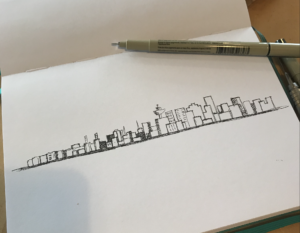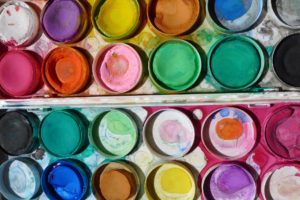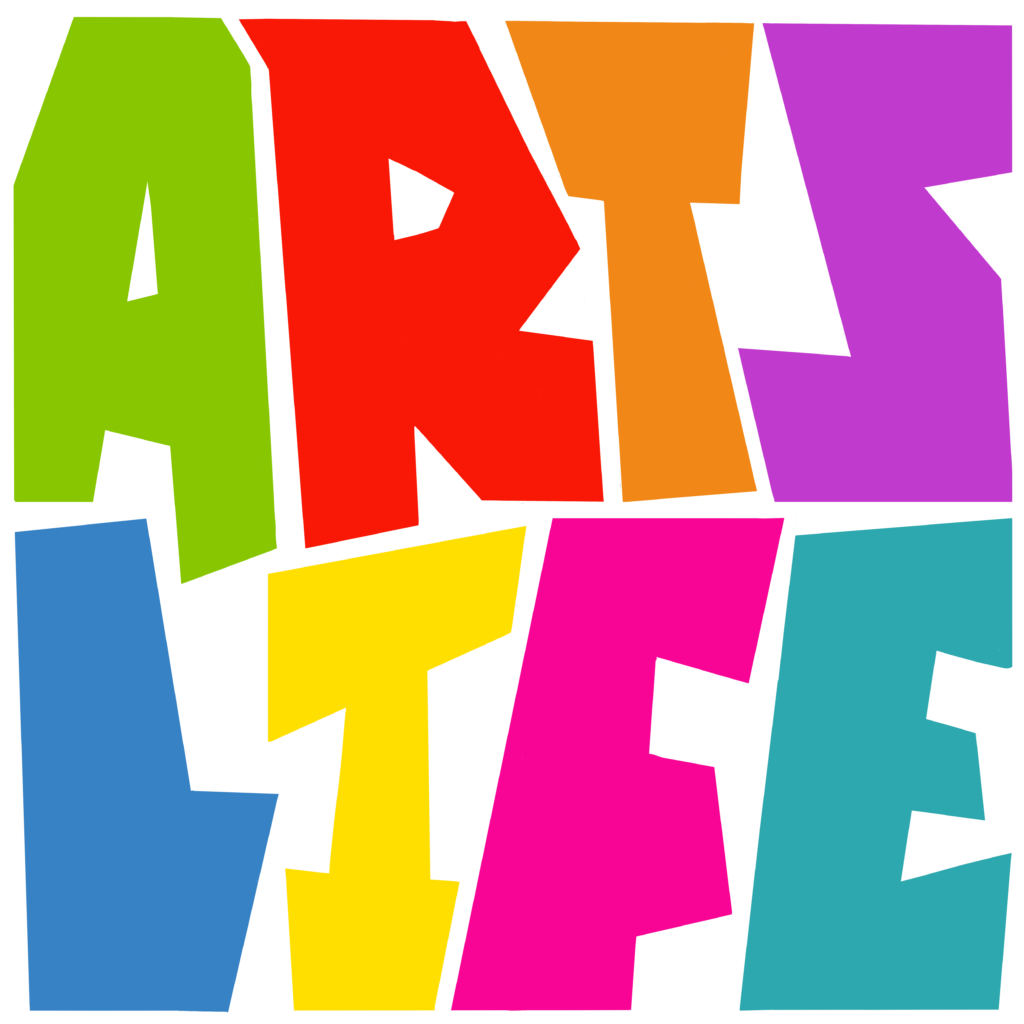Introduction I want to talk about getting a daily art practice going. You may think you are not a good artist or perhaps you don't even consider yourself as an artist at all, but I urge you to accept that you are an aspiring artist. My journey to being able to say I...
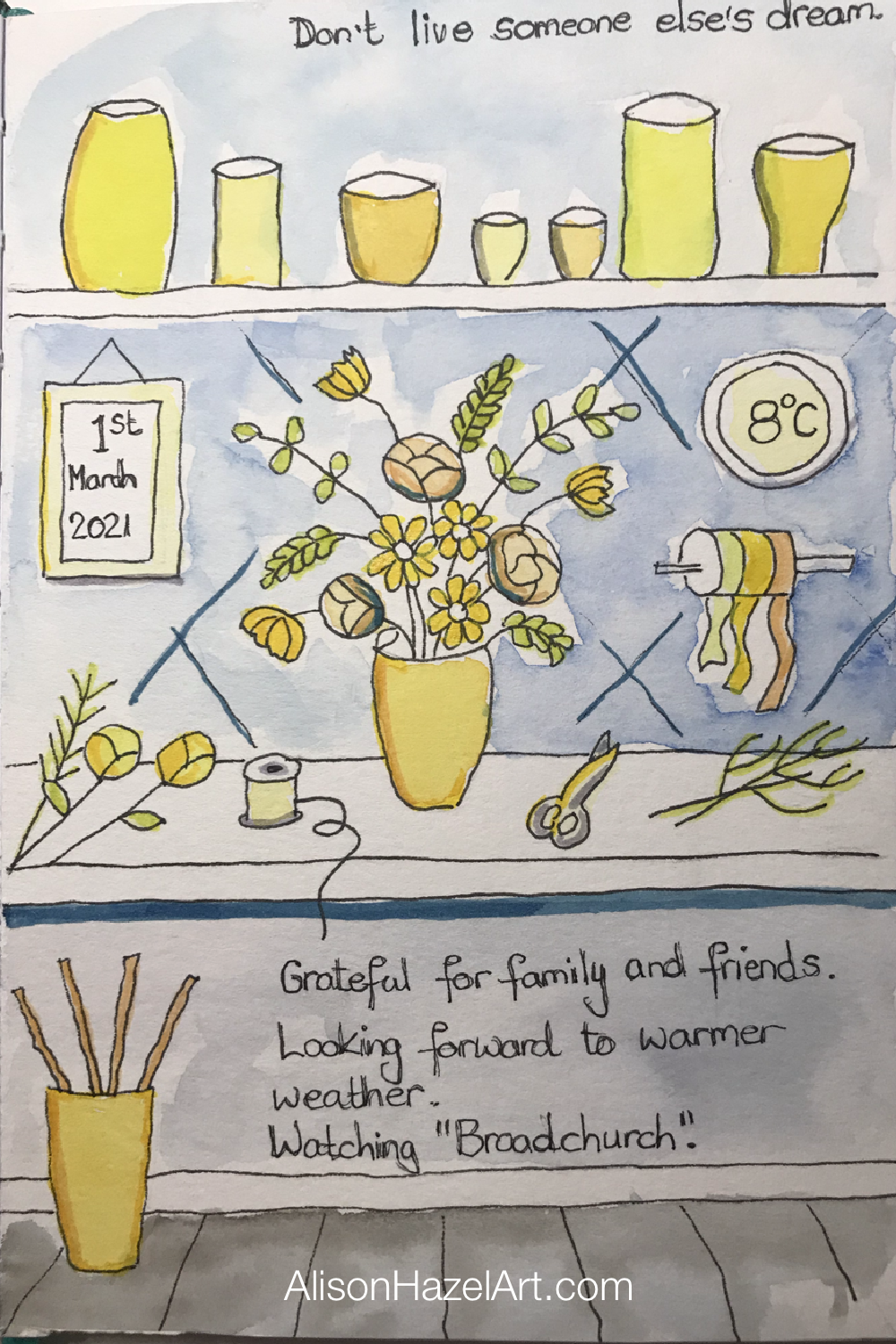
Sketch Journal Page – “Florist Shelf”
Florist Shelf
This week I’ve created a florist shelf with watercolor and markers for my sketch journal. You can follow along with this video.
[embedyt] https://www.youtube.com/watch?v=sEGxJDDDj00[/embedyt]
My Process
Pencil sketch.
Ink over.
Watercolor wash.
Markers.
Gratitude notes.
Sketch journaling is a way to document what happens in your life, once or twice a month.
A sketch journal is a beautiful memory book for how life was for you in any given each year.
What do you think?
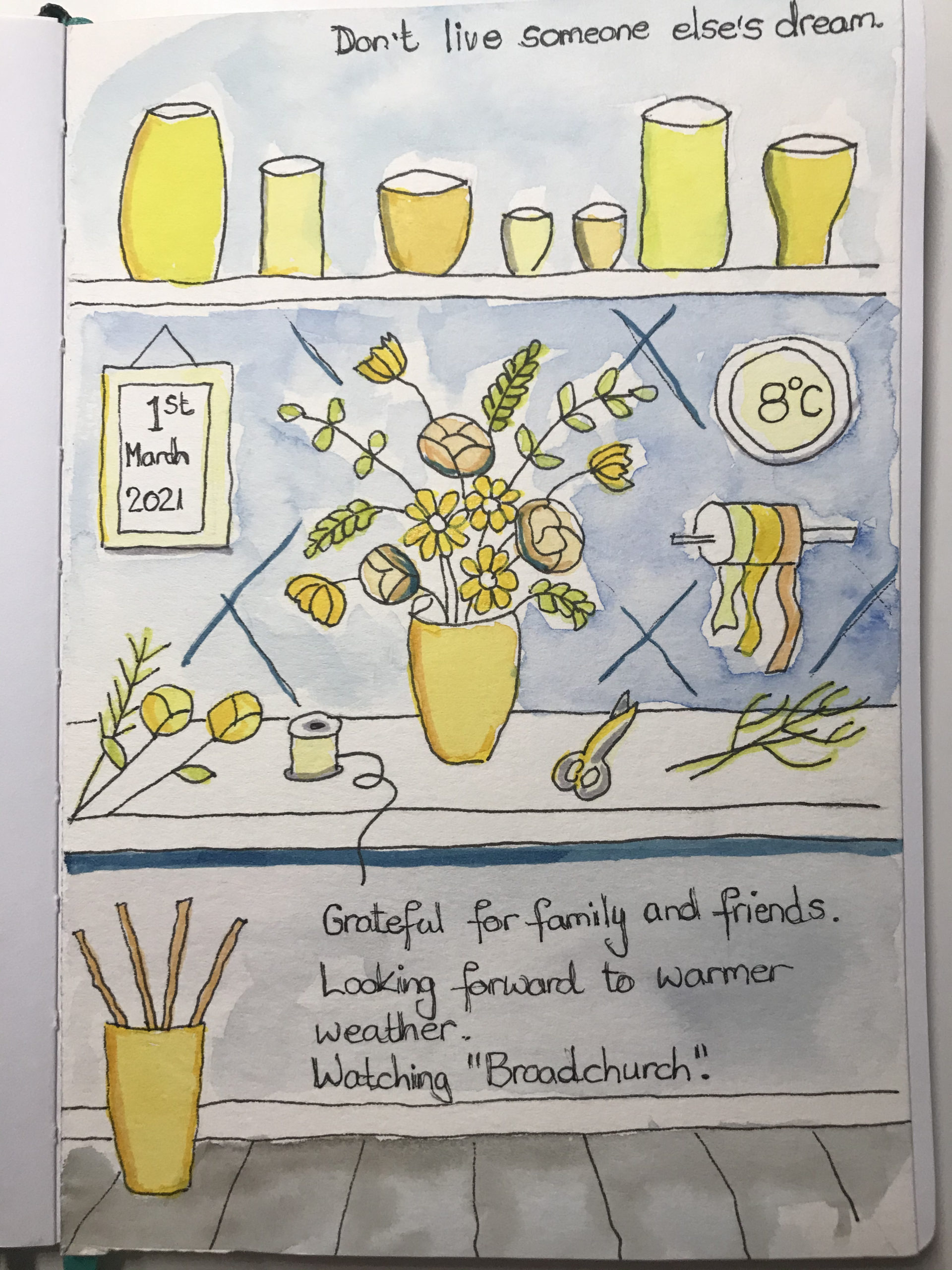
Aspiring Artist Activity: Florist Shelf
In your sketchbook please do the following:
- Draw three shelves.
- Add assorted florist details just like we did.
Share your sketch journal pages with us on the hashtag #AlisonHazelArt so we can find your images.
We’d love to see what you create.
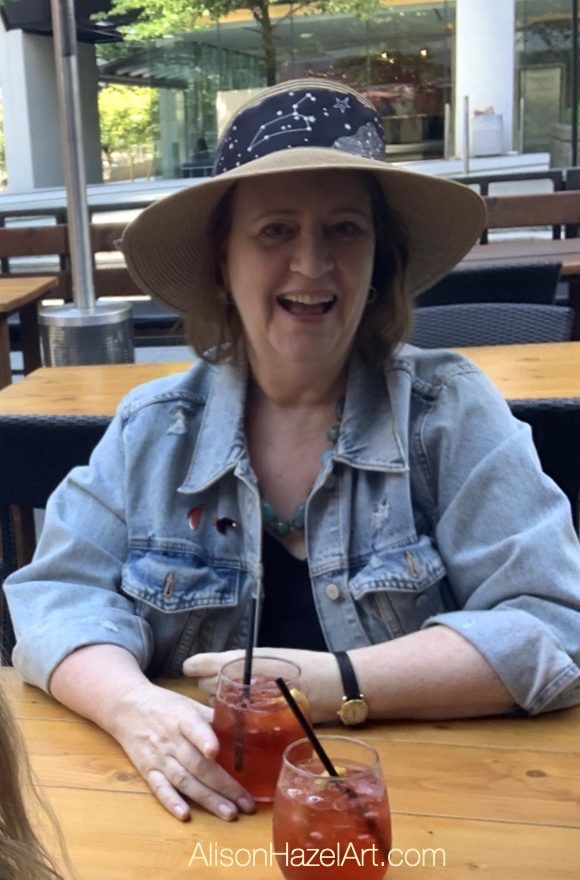
Author Bio: Alison Hazel
Alison Hazel is a hobby artist and she shares her ongoing journey about becoming an artist later in life. She creates simple art that anyone can make. She hopes to inspire you to reach your creative potential in the area that suits you.
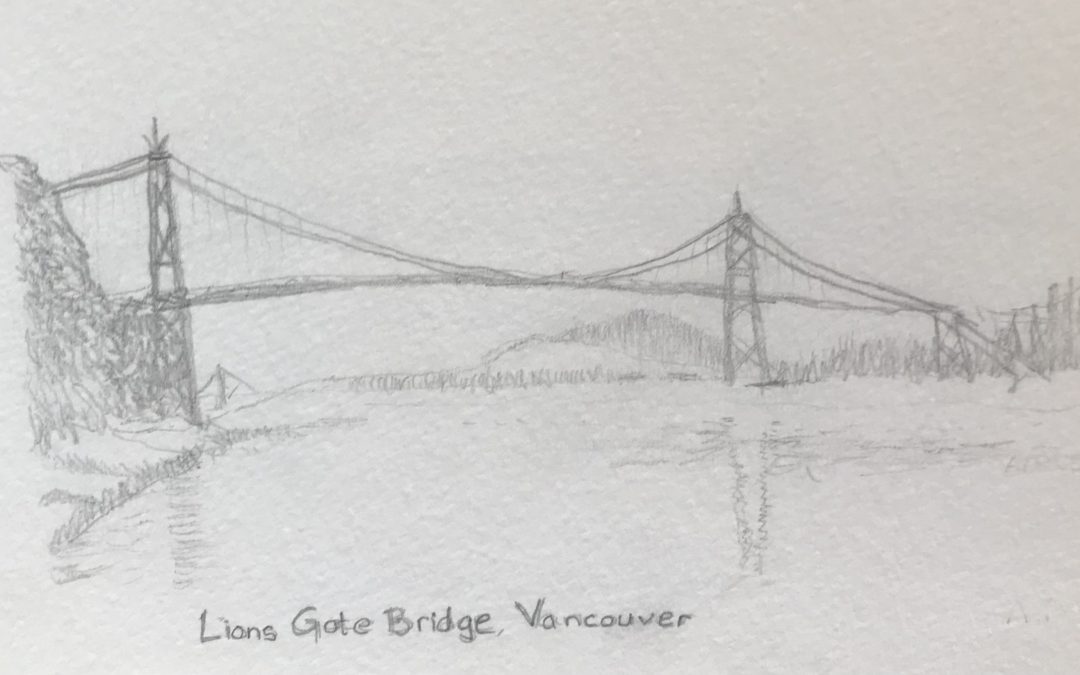
Building Bridges in Art – Graphite Sketches – Aspiring Artist
Building Bridges Bridges join two places together they bridge the gap between one side and another. To cross a bridge is an important movement as we go from the known to the unknown. It is easy to stay on your shore and not travel across a bridge both physically and...
No Results Found
The page you requested could not be found. Try refining your search, or use the navigation above to locate the post.
